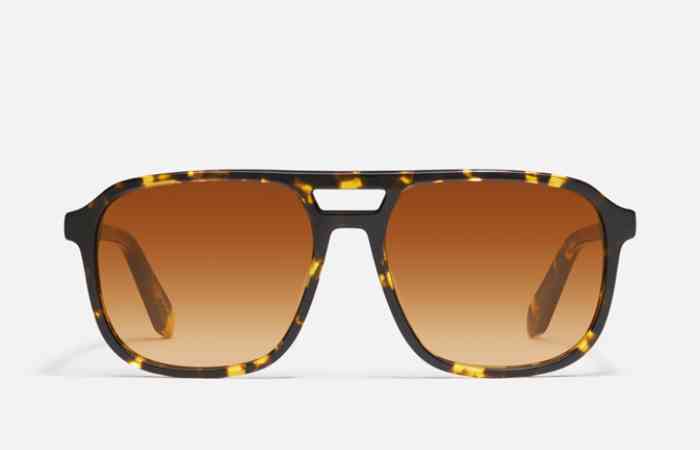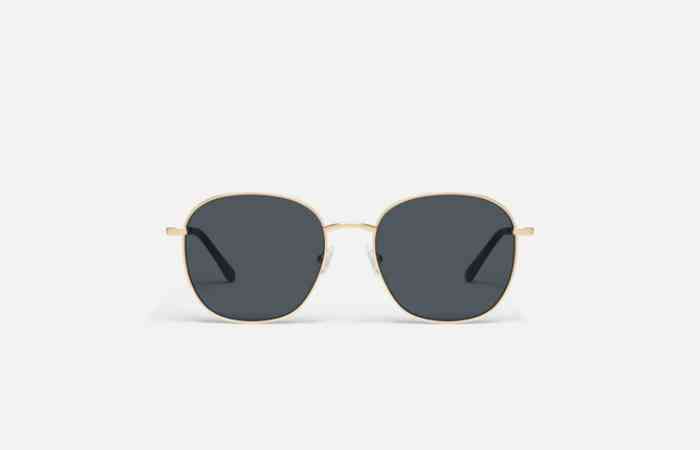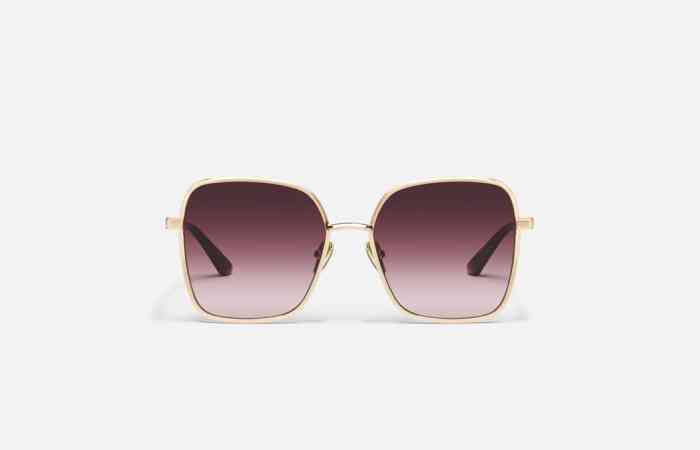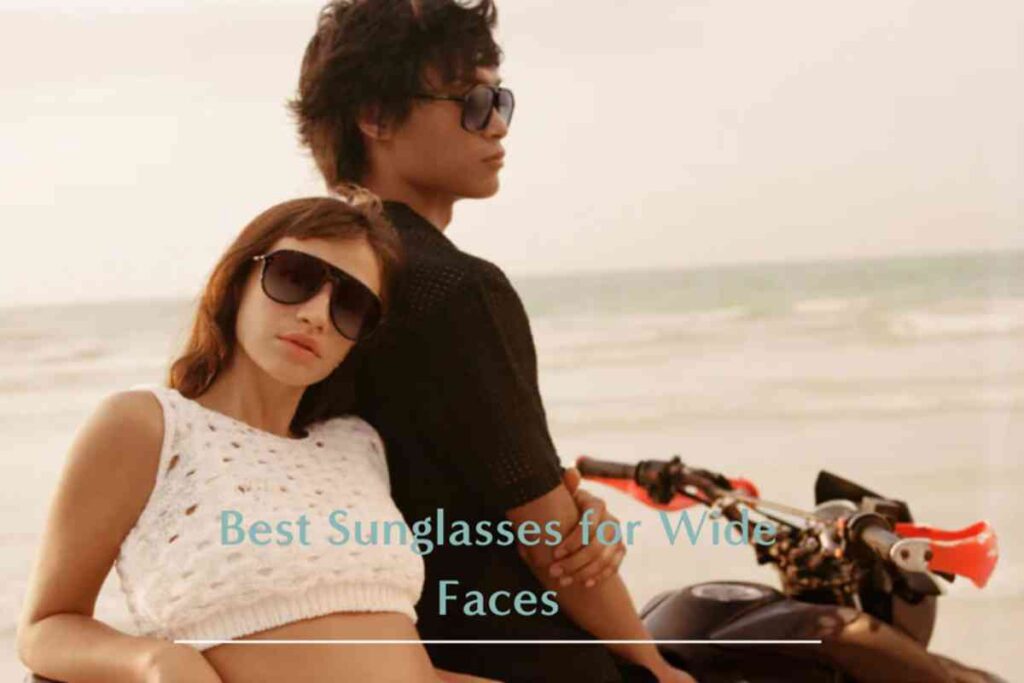You walk into a sunglasses store. Try on the first pair; temples are already digging in. Second pair; can’t even get them fully on your face. Third pair; technically fits, but makes you look like you borrowed a child’s sunglasses. The salesperson cheerfully suggests, “Maybe try online shopping?”
Welcome to the wide face struggle. Where oversized sunglasses aren’t actually oversized enough, “one size fits all” is a straight-up lie, and you’ve memorized which brands to skip entirely because their idea of “large” is laughable.
But everything changes when you find frames that fit; you don’t just look better, you feel like an entirely different person. No more constant adjusting. No more temple headaches by noon. No more choosing between “too small but wearable” and “staying inside.” The right frames don’t squeeze; they complement. They don’t compromise; they work. That’s not asking too much; that’s just frames doing their actual job. You are going to learn all about sunglasses for wider faces in this guide.
Why Regular Sunglasses Fail Wide Faces (Spoiler: It’s Not You)
Let’s address the elephant in the room: most sunglasses are designed for a face that doesn’t exist. Some mythical “average” that’s somehow narrower than 75% of actual humans.
The temple squeeze is real. Those arms pressing into your head? That’s not normal wear. That’s frames literally too small for your skull. You shouldn’t need ibuprofen after wearing sunglasses.
The lens gap problem. When frames are too narrow, the lenses don’t actually cover your field of vision. You get weird light leaks from the sides. Defeats the whole purpose.
The proportion disaster. Small frames on a wide face don’t look “delicate” or “refined.” They look like you’re wearing your kid’s dress-up accessories.
The constant slide. Frames that barely fit don’t stay put. You spend more time pushing them up than actually wearing them. That’s not a style choice; that’s poor engineering.
The 5 Sunglasses That Actually Work for Wide Faces
After extensive real-world testing (aka living with a wide face), QUAY consistently delivers frames that get it. Here are the ones that actually fit:
1. On The Fly; The Problem Solver

On The Fly was clearly designed by someone who understands wide face physics. The temples have actual give. The frame width doesn’t lie. These are what “oversized” should mean; frames that fit larger faces without drama.
2. High Key; The Statement Piece

Most statement sunglasses assume narrow faces. High Key breaks that rule. Bold design that actually scales up properly. You get the fashion moment without the squeeze. Finally, wide faces can have fun too.
3. Level Up; The Daily Essential

Level Up nails the everyday sunglasses assignment. Wide enough to be comfortable, styled enough to be interesting. These are the ones you’ll grab every morning because they just work. No thinking required.
4. Jezabell; The Curve Master

Not every wide face wants angular frames. Jezabell brings soft curves that still respect wide face geometry. The proportions make sense. The fit feels intentional, not accidental.
5. 5th Ave; The Sophisticate

The 5th Ave proves wide-face sunglasses don’t have to scream “WIDE FACE SUNGLASSES.” Subtle sizing adjustments, refined details. These whisper quality while actually fitting your face.
Face Width Reality Check (The Numbers That Matter)
Forget vague terms like “oversized” or “large.” Here’s what actually matters:
Frame width: You need a minimum of 140mm. Preferably 145mm+. Anything under 140mm is fantasy if you have a genuinely wide face.
Temple length: 140-150mm is the sweet spot. Shorter and they don’t reach your ears properly. Longer and they stick out weird.
Lens width: 58mm+ per lens. This isn’t about drama; it’s about actual eye coverage.
Bridge width: 18-20mm typically works. Too narrow pinches your nose. Too wide and the frames sit wrong.
Measure your current most comfortable frames. Use those numbers as your baseline. Ignore marketing speak; trust measurements.
What Actually Makes Wide-Face Sunglasses Work
Here’s what separates good from great:
Spring hinges are non-negotiable. They give when you put the frames on. Regular hinges don’t. This single feature prevents 90% of fit issues.
Material flexibility matters. Rigid plastic or metal has no give. Acetate and certain composites flex slightly. That flexibility is the difference between fit and squeeze.
Weight distribution is key. Heavier frames need better balance. All the weight on your nose bridge = sliding. Proper temple design spreads the load.
Adjustable components help. Nose pads that move. Temple tips that bend. These micro-adjustments turn “almost fits” into “perfect.”
Styles That Work (And The Ones That Never Will)
Winners for Wide Faces:
- True oversized frames (not marketing “oversized”)
- Modern aviators with extended width
- Square frames with actual width
- Shield styles that wrap properly
- Cat-eyes are designed for bigger proportions
Automatic No’s:
- Anything labeled “narrow fit”
- Most vintage reproductions (made for smaller faces)
- Tiny wire frames (just don’t)
- Most designer frames (they run small)
- Kids’ or teen styles (obviously)
Shopping Smart for Sunglasses for Women with Wide Faces
When shopping for sunglasses for women with wide faces, consider the following essential factors.
- Try before you buy when possible. Online measurements help, but don’t tell the whole story. Temple pressure, weight distribution; you need to feel these.
- Read reviews from wide-faced people specifically. “Fits great!” from someone with a narrow face means nothing to you. Look for reviews mentioning temple pressure or wide face fit.
- Check return policies religiously. Some places don’t accept returns on worn sunglasses. Others give you 30 days to decide. Guess which ones to choose.
- Don’t compromise on almost-fits. “They’ll stretch out” is a myth. “I’ll get used to them” is acceptance of pain. If they don’t fit day one, return them.
The Comparison Table That Matters
|
Feature |
What You Need |
What to Avoid |
| Frame Width | 140mm+ | Under 135mm |
| Temple Length | 140-150mm | Under 135mm |
| Material | Flexible acetate, TR90 | Rigid metal, hard plastic |
| Hinges | Spring-loaded | Standard only |
| Bridge | 18-20mm with pads | Fixed the narrow bridge |
| Weight | Under 30g | Over 35g |
Maintenance for Maximum Lifespan
Store them properly. Wide-face frames often have more tension on the hinges. A hard case prevents warping and maintains shape.
Clean carefully. Larger lenses mean more surface area for scratches. Microfiber only, proper cleaner always.
Check screws monthly. The extra width puts more stress on connection points. One loose screw becomes a broken frame fast.
Adjust professionally. DIY adjustments on wide frames often make things worse. Most optical shops adjust for free.
The Bottom Line
Stop settling for sunglasses that “kind of” fit. Stop accepting temple headaches as normal. Stop pretending those small frames look intentional.
Wide faces deserve the same options as everyone else. Brands like QUAY finally get that bigger faces aren’t an anomaly; they’re just faces that need properly sized frames.
Find your measurements. Know your non-negotiables. Get frames that fit your actual face, not the face sunglasses companies wish you had.
FAQs
Q: Why do all sunglasses feel tight on my temples?
A: You have a wide face and you’re trying to wear regular-width frames. You need frames that are at least 140mm wide, preferably with spring hinges. The pressure you’re feeling isn’t normal; it’s frames that are literally too small for your head.
Q: Can wide faces wear trendy, smaller styles?
A: Honestly? No. Physics doesn’t care about trends. Small frames on wide faces look disproportionate and feel uncomfortable. Better to find oversized versions of trendy styles than force a fit that doesn’t work.
Q: Are expensive sunglasses better for wide faces?
A: Not necessarily. Many luxury brands actually run smaller because they’re often European-designed for narrower faces. Focus on measurements and fit features rather than price. Some affordable brands understand wide faces better than high-end ones.
Q: How do I know if my face is actually wide?
A: If regular sunglasses consistently feel tight, leave marks on your temples, or look too small in photos, you have a wide face. Also, if your face width (temple to temple) measures over 140mm, you need wide-fit frames. But honestly, if you’re reading this article, you probably already know.


